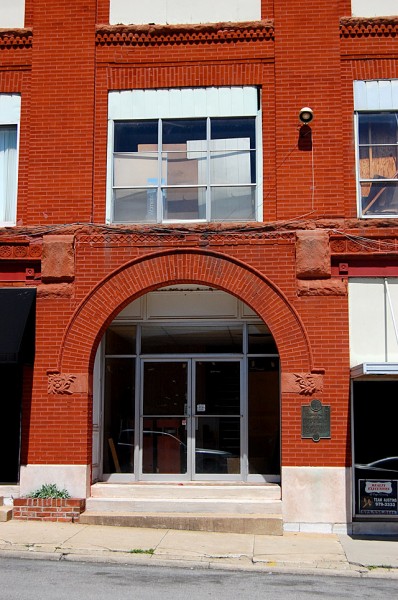 I was walking east on Themis toward the Common Pleas Courthouse trying to spot the old Teen Age Club that got to bouncing so hard one night that the city inspector shut it down because he was afraid the floor might collapse. On the opposite of the street was a nondescript red brick building that had a plaque on it. (Click on any photo to make it larger.)
I was walking east on Themis toward the Common Pleas Courthouse trying to spot the old Teen Age Club that got to bouncing so hard one night that the city inspector shut it down because he was afraid the floor might collapse. On the opposite of the street was a nondescript red brick building that had a plaque on it. (Click on any photo to make it larger.)
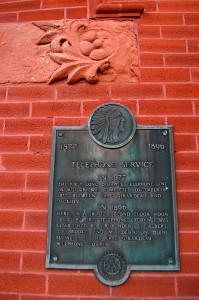 The Rotary Club plaque read, “Telephone Service. In 1877 the first long distance telephone line in Missouri was completed December 18, 1877, between Cape Girardeau and Jackson. In 1896 here in a 10′ x 12′ second floor room the city’s first telephone exchange was established by A.R. Ponder, L.J. Albert, J.F. Brooks and M.A. Dennison doing business as the Cape Girardeau Telephone Company.”
The Rotary Club plaque read, “Telephone Service. In 1877 the first long distance telephone line in Missouri was completed December 18, 1877, between Cape Girardeau and Jackson. In 1896 here in a 10′ x 12′ second floor room the city’s first telephone exchange was established by A.R. Ponder, L.J. Albert, J.F. Brooks and M.A. Dennison doing business as the Cape Girardeau Telephone Company.”
As a former telecommunications manager, I was vaguely intrigued.
I flashed back to when I was offered the telecom job just before I left on vacation to head back to Cape in the early ’90s. I knew absolutely nothing about phone stuff, but I remember thinking as I was going through little villages like Old Appleton, “Wow, if I take this job I’ll have a bigger phone system than this town.”
That call to Jackson
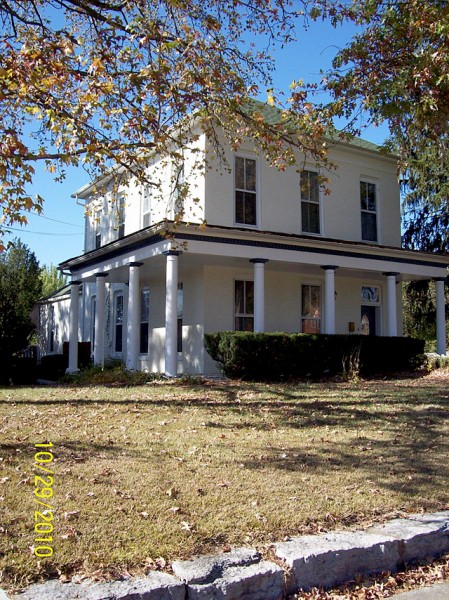 I put the story on the back burner for a slow day. When Friend Shari Stiver and I took a stroll down Main Street one day when we were both in town, she said she’d like to swing by to look at the old telephone exchange, which had also been the Sturdivant Bank, the oldest bank in Southeast Missouri.
I put the story on the back burner for a slow day. When Friend Shari Stiver and I took a stroll down Main Street one day when we were both in town, she said she’d like to swing by to look at the old telephone exchange, which had also been the Sturdivant Bank, the oldest bank in Southeast Missouri.
“The call may have originated in Cape,” she said, “but do you have any idea where it terminated in Jackson?”
Somehow or another, knowing Shari, I was pretty sure I was going to find out.
“The first call rang in my great-grandfather’s kitchen,” she elaborated. “He was the J.F. Brooks mentioned on the plaque. He was the engineer who laid out the railroad for Louis Houck. Houck wanted to be able to get hold of him, so he had him pull a phone line between Cape and Jackson.”
Major Brooks “advanced” down to Advance
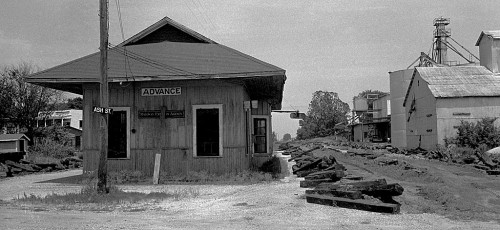 “Are we talking about the Major James Francis Brooks who Houck told to ‘advance’ down the line another mile to a stand of mulberry trees where land for a train depot could be bought for $10 an acre instead of $30 an acre in Lakeville?”
“Are we talking about the Major James Francis Brooks who Houck told to ‘advance’ down the line another mile to a stand of mulberry trees where land for a train depot could be bought for $10 an acre instead of $30 an acre in Lakeville?”
That “advance” turned out to become Advance, Missouri, Mother’s hometown.”
Yep, it was the same guy. Major Brooks’ engineering ended up resulting in the establishment of many of the small towns like Sturdivant, Brownwood, Blomeyer and Delta.
Brooks came west on a spotted pony
Shari added that her great-grandmother, “Bookie” (Florence Adele Turnbaugh Brooks) played telephone operator after the initial excitement of the first couple of calls died down. Maj. Brooks got his engineering degree at Vineyard College in Kansas City after he rode his spotted pony west with a wagon train to get there.
The Turnbaughs were Southerners who owned slaves, which Shari suspects caused some heated discussions over a bottle of whiskey on the front porch of the Turnbaugh house in Jackson.
Brooks created SEMO terraces
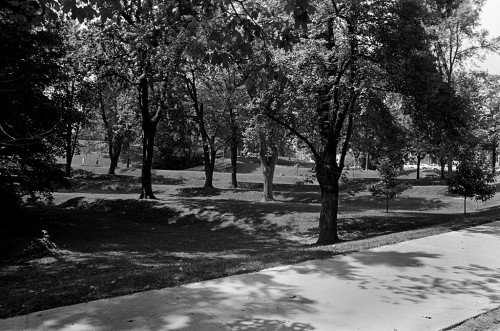 The excellent history, A Missouri Railroad Pioneer: The Life of Louis Houck (Missouri Biography Series), describes how Houck was concerned with preserving the pastoral beauty of Normal School (which became SEMO) and reducing water runoff so he hired Maj. Brooks to landscape the terraces on the east side of Academic Hall that are still visible today.
The excellent history, A Missouri Railroad Pioneer: The Life of Louis Houck (Missouri Biography Series), describes how Houck was concerned with preserving the pastoral beauty of Normal School (which became SEMO) and reducing water runoff so he hired Maj. Brooks to landscape the terraces on the east side of Academic Hall that are still visible today.
The book said that part of the project was to build a two-foot sandstone retaining wall along Normal Avenue, “although admittedly this last project was more to stop wayward farm animals from straying onto the grounds.”
101 North Main condemned
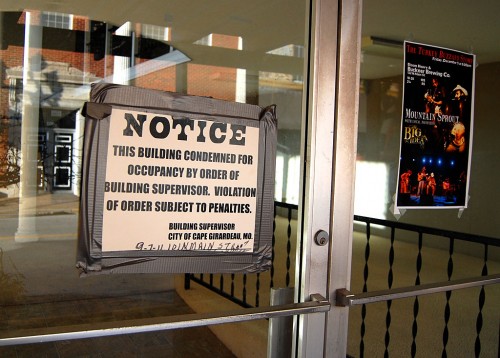 The landmark building has been condemned by the city. You can read the details of the wrangling in this Missourian story by Melissa Miller.
The landmark building has been condemned by the city. You can read the details of the wrangling in this Missourian story by Melissa Miller.
Cable reinforces wall
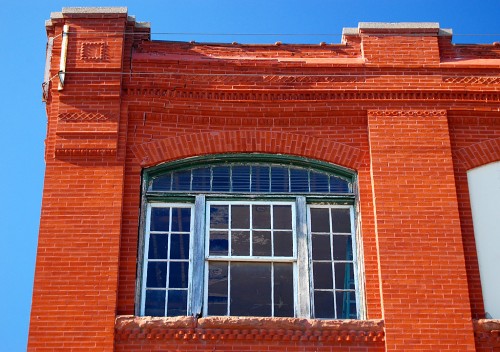 As much as I love old buildings, I can see what the concern is. When you look through the gallery of photos taken over a three-year period, you can see that the upper level has deteriorated to the point that a covered walkway had to be constructed to protect passersby from falling wayward bricks.
As much as I love old buildings, I can see what the concern is. When you look through the gallery of photos taken over a three-year period, you can see that the upper level has deteriorated to the point that a covered walkway had to be constructed to protect passersby from falling wayward bricks.
A double cable around the top of the building keeps the walls from sagging outward. I don’t know that I can argue with a Missourian commenter who wrote, “Look how the front is shifting out. If it falls about all the plywood awning will do is separate the bodies better from the rubble.”
Sign says Cape Wiggery
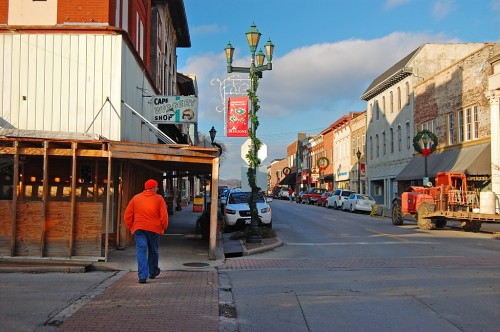 I’m not sure what the last business was to be in the building. The sign still says Cape Wiggery Shop. The 1969 City Directory said Kay’s was in there.
I’m not sure what the last business was to be in the building. The sign still says Cape Wiggery Shop. The 1969 City Directory said Kay’s was in there.
Interior has been cleaned out
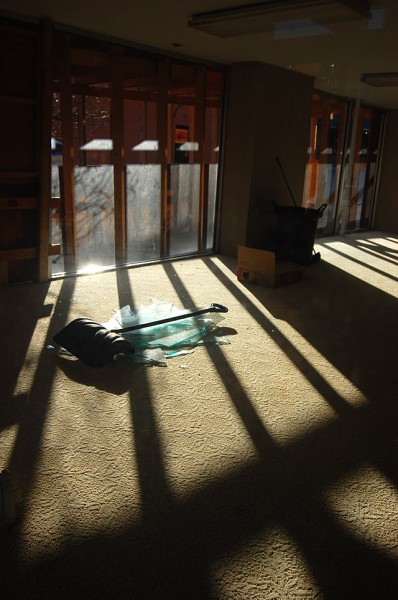 The inside, at least from looking through the window, looks pretty clean.
The inside, at least from looking through the window, looks pretty clean.
It’ll be missed
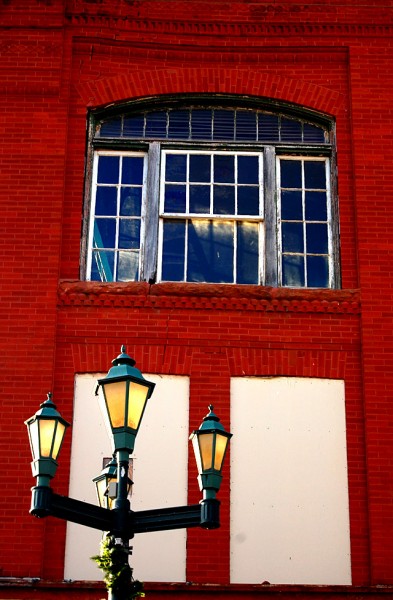 I’ve made some iconic pictures of the building over the years, so I’ll miss it if it’s pulled down. It would be nice to think it could be saved, but it sure has the sniff of a parking lot about it, based on what I’ve seen and the news stories.
I’ve made some iconic pictures of the building over the years, so I’ll miss it if it’s pulled down. It would be nice to think it could be saved, but it sure has the sniff of a parking lot about it, based on what I’ve seen and the news stories.
101 North Main photo gallery
Click on any photo to make it larger, then click on the left or right side of the image to move through the gallery. (Thanks to Shari for the Jackson house picture and for sharing the story of her great-grandfather.)


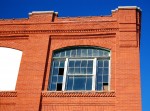
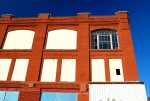




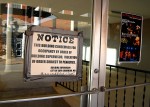



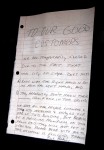








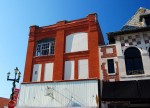
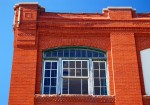

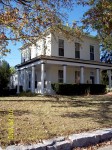
My wife and I shopped in the last business in there. It sold only Christmas items. I assumed the walkway cover was to protect people while renovations were being made. Many of these buildings have or had apartments in the upper floors. The few times I’ve been upstairs in any of them it was easy to tell how the building had shifted by looking at the crooked walls and the feeling of walking up or down hill going from room to room. The views from some of them is quite nice looking East across the river.
Perhaps within ‘2 seconds’ after seeing your headline and first picture in today’s edition, Mary said … that’s Minnen’s! Some research into the Missourian archives confirms “confidence is very high” that my lovely spouse is (as nearly always) correct: this is the building that those of us from ‘back in the day’ knew as Minnen’s Dress Shop, or merely, Minnen’s.
Thanks again, Ken, for the memories.
I was just downtown this morning and walked under the awning looking for a present to take back to Florida. The building looks pretty bowed at the top. I parked on Spanish street so I took the alley back to my car. You should have went down the alley. You missed the gang signs and the empty Jack Danials bottle but I find the backs of the old buildings interesting. It was a nice walk.
Realizing the need of a public time-piece where everybody can get the correct time of day, the Sturdivant Bank has erected a magnificent electric illuminated clock in front of its banking house. –April 17, 1917 Daily Republican advertisement
See a picture and read more here:
http://www.semissourian.com/blogs/flynch/entry/41946
Ken, unfortunately, that historic building is probably plagued with what doomed the original Trinity Lutheran Church; a lack of Portland Cement in the mortar. It is probably simply a mixture of lime and sand which will eventually fail. Also, like any building, the roof and the sealing of horizontal surfaces at the top of the building are both critical to the survival of the structure.
Isn’t it interesting how inextricably the history of Cape and Southeast Missouri are tied to Louis Houck and his railroads? Being a history and railroad buff go hand-in-hand.
My sisters, Mary Ann and Bette, and I went to Training School, the College’s elementary school. The terraces were our playground, running, chasing and in the winter, our snow slide.
We have many fond of those beautiful terraces.
First, Hello to Jane Ewan P…a voice from my past. Second, I too was a student at the Campus School and spent many a recess running and playing on the terraces across from the school (the old building). And…I remember being selected to recite (do kids do this any more) the poem, Trees by Joyce Kilmer when the beautiful Magnolia tree was planted on the front side of our building. Lastly, my mom, Blanche Huff left Alma Schrader to take the position of first grade supervisor at Campus School, teaching in the old and the new building.
Oh, my, WoW. Just beginning my ancestry/genealogy research, I wonder if this is the same James Francis Brooks that was my great grandfather who was born and lived in Missouri (someplace, not sure where, yet)!
Thanks for these pictures!
First and Foremost, Louis Houck hired people, to lay those tracks, and besides the Frisco existed already prior to Louis Houck being involved with it, are you aware of this? Sure it did, he merely hired the pros to lay what…somen 22 miles of track which failed? Right, so if you want to know who was really the hero’s, in Cape and SE Missouri, where the railroad is concerned? Check out A.R. Ponder, he was a college graduate – civil engineer who laid those rr lines and built the new Frisco Depot. Also, he was the commissioner as well over time of Frisco RR, – and he laid RR Track Lines from St.Genevieve eventually, all the way to Corpus Christie Texas, and after laying track for the San Antonio RR, UValde RR and the Gulf RR, which became Pacific RR – Mr. Ponder laid that track, and not only was he once manager, receiver, director, officer over all three RR’s, but he bought all three Rail Roads. He also built the roads from Cape to Perryville, Perryville- the road to Chester, Cape to Commerce, to Caruthersville and many more. He also owned brought the first phone system to Cape Girardeau and SE Missouri, then was propositioned by Bell Phone Company to partner, so he partnered with them and remained on as a director til after 1925, so the man was far more successful, than Louis Houck, no offense and he is the one who did the hard work. Matter of fact he employed Louis Houcks son, on his Railroad in Texas after he left Cape Girardeau Missouri, and went to Texas. He bought the three railroads for $1 Million cash and other considerations from a St. Louis Trust Bank, and he built a hospital and formed a fund for poor people to get medical care, including his employees on the railroad. The man worked til he died. Leming of the Oliver and Leming House in Cape. wanted in on the action to make money, and asked Ponder if he could accompany him to Saint Louis, then onward back home to Texas. Did I mention while building the railroad he hit oil? Yes, he did. And anyone and everyone else in the phone company, was after the fact- and brought in by A.R. Ponder, to work for and later some partnered with him, because they saw the opportunity of course. A.R. Ponder never received the recognition that Louis Houck has in Cape, nor by the city either yet, he was the ONE who made the Frisco RR a real success, like he did everything else he did. Dont get me wrong, Louis Houck was a prominent man, of course and he earned his recognition. Same time one cannot compare apples to oranges, and A.R. Ponder – was by far a large successor, in Cape Girardeau and all the way, to Texas, and the man worked to the day he died. Lets give the man and his family the recognition deserved, please. Thanks.
Thanks for the history lesson. As you might suspect, we’re a little Houck-centric in Cape Girardeau.
I have some reading to do, it looks like.